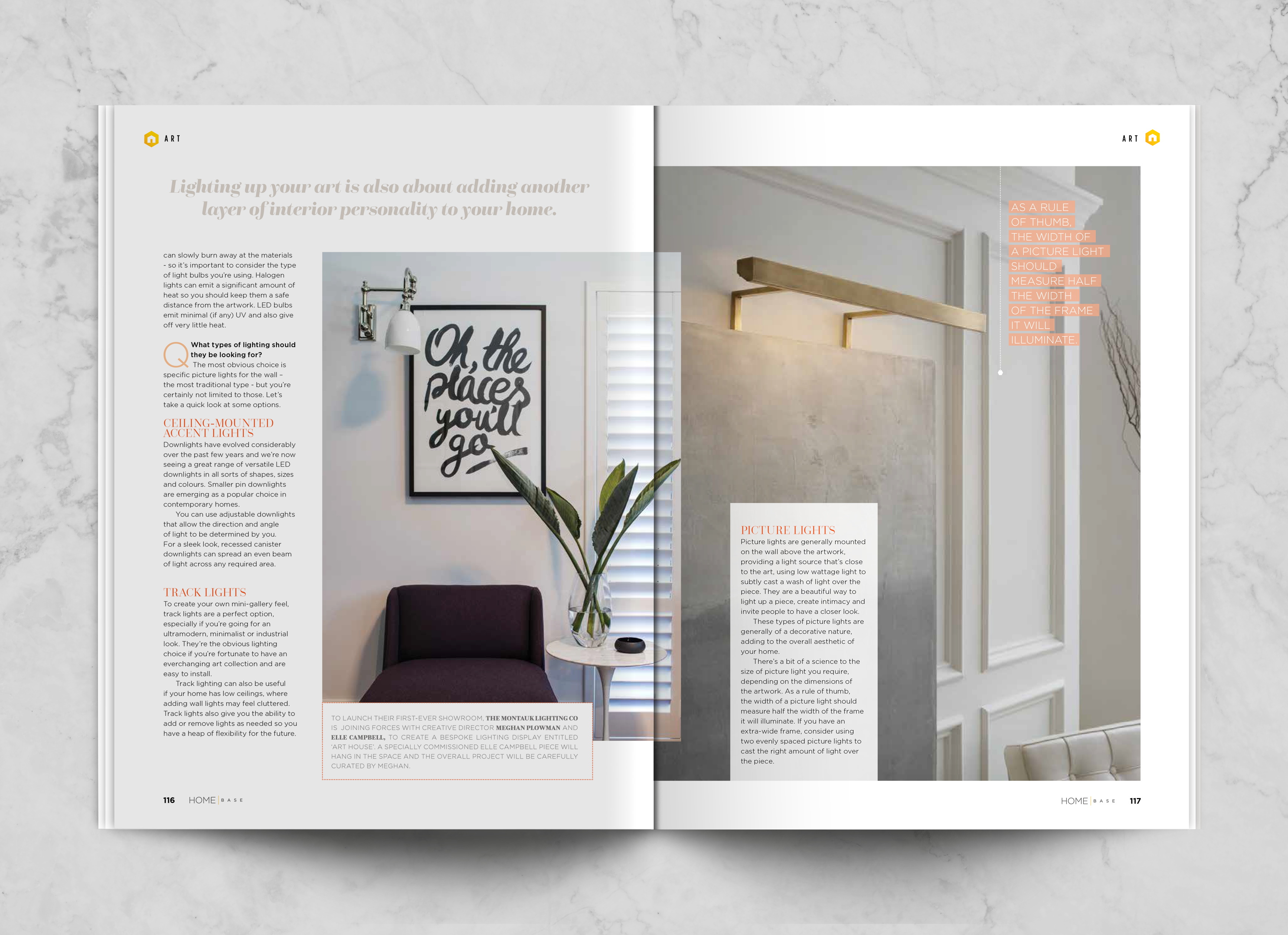So you've collected some pieces of art that you love and you've adorned your walls with them. But the job is not finished until they're properly lit. Marie from The Montauk Lighting Co. shares her insider tips to help you light up your special pieces.

Q: Why is it important to get the right lighting to enhance artwork?
A: When you’re in those final stages of putting the finishing touches to a room, there’s nothing better than adding a beautiful piece of art to the space. Enhancing it through lighting allows the artwork to live and breathe throughout the day and night.
There isn’t a one-size-fits-all approach when it comes to lighting up your favourite works. Do you want to directly illuminate the art or are you simply wanting it to live in a well-lit room? It’s all about balance, budget and the look you’re going for.
Q: How can people use lighting to get more out of their art collection?
A: Don’t feel the need to light up every single piece of art in your home. Be selective and focus on pieces that are either valuable in monetary terms or mean something to you personally.
Lighting up your art is also about adding another layer of interior personality to your home. There are a lot of choices available - finishes, styles, colours and shapes.
Light can damage artwork over time - heat and ultraviolet (UV) light can slowly burn away at the materials - so it’s important to consider the type of light bulbs you’re using. Halogen lights can emit a significant amount of heat so you should keep them a safe distance from the artwork. LED bulbs emit minimal (if any) UV and also give off very little heat.

Q: What types of lighting should they be looking for?
A: The most obvious choice is specific picture lights for the wall – the most traditional type - but you’re certainly not limited to those. Let’s take a quick look at some options.
CEILING-MOUNTED ACCENT LIGHTS
Downlights have evolved considerably over the past few years and we’re now seeing a great range of versatile LED downlights in all sorts of shapes, sizes and colours. Smaller pin downlights are emerging as a popular choice in contemporary homes.
You can use adjustable downlights that allow the direction and angle of light to be determined by you. For a sleek look, recessed canister downlights can spread an even beam of light across any required area.
TRACK LIGHTS
To create your own mini-gallery feel, track lights are a perfect option, especially if you’re going for an ultramodern, minimalist or industrial look. They’re the obvious lighting choice if you’re fortunate to have an everchanging art collection and are
easy to install.
Track lighting can also be useful if your home has low ceilings, where adding wall lights may feel cluttered. Track lights also give you the ability to add or remove lights as needed so you have a heap of flexibility for the future.
PICTURE LIGHTS
Picture lights are generally mounted on the wall above the artwork, providing a light source that’s close to the art, using low wattage light to subtly cast a wash of light over the piece. They are a beautiful way to light up a piece, create intimacy and
invite people to have a closer look.
These types of picture lights are generally of a decorative nature, adding to the overall aesthetic of your home.
There’s a bit of a science to the size of picture light you require, depending on the dimensions of the artwork. As a rule of thumb, the width of a picture light should
measure half the width of the frame it will illuminate. If you have an extra-wide frame, consider using two evenly spaced picture lights to cast the right amount of light over the piece.
To view a range of suitable picture lights, view the full collection online.
Read the the Spring Summer edition of the Home Base Magazine online now.

